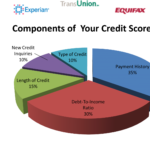How are secured creditors treated under Chapter 13?
There are four methods of dealing with secured creditors under Chapter 13:
- The creditor may accept the debtor’s proposed plan
- The creditor may retain its lien and be paid the full amount of its secured claim under the plan
- The debtor may surrender the collateral to the creditor
- The creditor may be paid or dealt with outside the plan
A debtor may not have to pay the full amount owed on: auto, household, furniture or jewelry loans that are subject to a lien. It is important to understand that a creditor has a secured claim only to the extent of the value of its security, which cannot exceed the value of the property securing the claim. However, there are two exceptions to this rule:
- The creditor of a motor vehicle, purchased by the debtor for the debtor’s personal use, sold within the 910-day (2.5-year) period preceding the date of filing Chapter 13
- The creditor(s) of any collateral purchased by the debtor within a one-year period prior to filing Chapter 13
Thus, a creditor with a lien on a $1,500 automobile cannot have a secured claim for more than $1,500, regardless of how much is owed to the creditor, if the debt is more than 910 days old at the time of filing. If the debtor is in default to a secured creditor, the default must be cured (made current) within a reasonable time. Also, interest must be paid on secured claims. But, the plan may provide for the debtor to pay less than the amount of interest the debtor previously agreed to on the original loan documents.
Call Firebaugh & Andrew today for your free consultation 734-722-2999

 Previous Post
Previous Post Next Post
Next Post